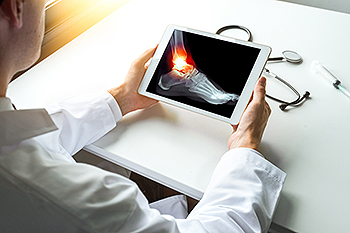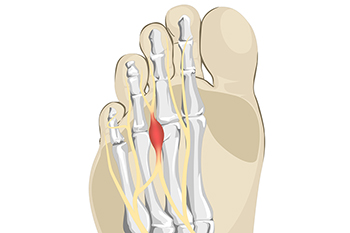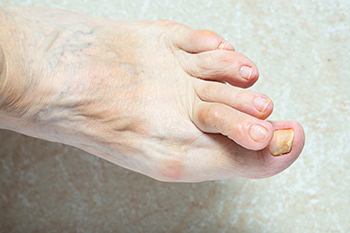Middlefield (860) 349-8500
Wallingford (203) 294-4977
Middlefield (860) 349-8500
Wallingford (203) 294-4977

A broken ankle can swiftly transform routine movements into moments of intense pain and disruption. This injury typically occurs when the ankle joint endures excessive force, often from a sudden twist, fall, or impact. The causes are diverse, ranging from sports related injuries to accidental slips or missteps. The severity of a broken ankle varies, with fractures manifesting in the bones surrounding the ankle joint. Symptoms, unmistakable in their intensity, include immediate pain, swelling, and difficulty bearing weight on the affected foot. Bruising may also develop, accompanied by a noticeable deformity or misalignment of the ankle. The sharp, shooting pain and the inability to move the ankle freely are indicative signs that warrant prompt medical attention. If you have broken your ankle, it is strongly suggested that you consult a podiatrist as quickly as possible who can properly diagnose and treat this type of fracture.
Broken ankles need immediate treatment. If you are seeking treatment, contact Dr. Gordon Fosdick from Affiliated Foot Care Center. Our doctor can provide the care you need to keep you pain-free and on your feet.
Broken Ankles
A broken ankle is experienced when a person fractures their tibia or fibula in the lower leg and ankle area. Both of these bones are attached at the bottom of the leg and combine to form what we know to be our ankle.
When a physician is referring to a break of the ankle, he or she is usually referring to a break in the area where the tibia and fibula are joined to create our ankle joint. Ankles are more prone to fractures because the ankle is an area that suffers a lot of pressure and stress. There are some obvious signs when a person experiences a fractured ankle, and the following symptoms may be present.
Symptoms of a Fractured Ankle
If you suspect an ankle fracture, it is recommended to seek treatment as soon as possible. The sooner you have your podiatrist diagnose the fracture, the quicker you’ll be on the way towards recovery.
If you have any questions, please feel free to contact our offices located in Middlefield and Wallingford, CT . We offer the newest diagnostic and treatment technologies for all your foot care needs.

A podiatrist manages Morton's neuroma, which is a painful condition involving thickened nerve tissue between the toes. Morton's neuroma typically feels like a sharp, burning pain in the ball of the foot, often with a sensation that is likened to a small rock or pebble inside the shoe under the forefoot. It may also feel like a stinging, burning, or numbing sensation in the toes adjacent to the neuroma. The discomfort from Morton's neuroma is generally felt between the third and fourth toes, but can also occur in other parts of the foot. Activities that involve pressure on the forefoot, such as walking or running, can exacerbate the pain. Initial treatments may include wearing proper footwear with a wide toe box and low heels, custom orthotic devices to alleviate pressure, and padding techniques. If these conservative measures fail, the podiatrist may administer corticosteroid injections to reduce inflammation and pain. In cases where non-surgical treatments do not provide relief, the podiatrist may recommend surgery, which involves either removing the affected nerve or releasing the tissue surrounding it to relieve pressure. If you believe you have Morton's neuroma, it is suggested that you make an appointment with a podiatrist who can begin appropriate and effective treatment.
Morton’s neuroma is a very uncomfortable condition to live with. If you think you have Morton’s neuroma, contact Dr. Gordon Fosdick of Affiliated Foot Care Center. Our doctor will attend to all of your foot care needs and answer any of your related questions.
Morton’s Neuroma
Morton's neuroma is a painful foot condition that commonly affects the areas between the second and third or third and fourth toe, although other areas of the foot are also susceptible. Morton’s neuroma is caused by an inflamed nerve in the foot that is being squeezed and aggravated by surrounding bones.
What Increases the Chances of Having Morton’s Neuroma?
Morton’s neuroma is a very treatable condition. Orthotics and shoe inserts can often be used to alleviate the pain on the forefront of the feet. In more severe cases, corticosteroids can also be prescribed. In order to figure out the best treatment for your neuroma, it’s recommended to seek the care of a podiatrist who can diagnose your condition and provide different treatment options.
If you have any questions, please feel free to contact our offices located in Middlefield and Wallingford, CT . We offer the newest diagnostic and treatment technologies for all your foot care needs.

Running is a fantastic way to stay fit and relieve stress, but it can also take a toll on your feet and shoes. This is where the practice of running shoe rotation comes into play. It involves switching between different pairs of running shoes to distribute the impact and wear more evenly. The importance of running shoe rotation lies in several key benefits. First, it prolongs the lifespan of your shoes. Continuous use of the same pair can lead to faster wear and tear, reducing their support and cushioning. Rotating between multiple pairs allows each shoe to recover between runs. Additionally, it helps prevent overuse injuries. Each pair of running shoes has a unique cushioning and support system. By alternating between them, you may reduce the risk of overloading specific muscle groups and joints. This can help to lower the risk of injuries such as shin splints, stress fractures, and Achilles tendonitis. Different shoes can provide variations in comfort and performance, giving your feet a break from repetitive motion and potentially improving your performance. Whether you are a seasoned runner or just starting out, incorporating a rotation schedule into your running routine can help keep your feet healthy and your runs enjoyable. For more information about running shoes and the importance of rotating them or if you have endured a foot or ankle injury from running, it is suggested that you speak with a podiatrist.
You should always make sure your running shoes fit properly in order to avoid injury. For more information, contact Dr. Gordon Fosdick from Affiliated Foot Care Center. Our doctor can provide the care you need to keep you pain-free and on your feet.
Choosing the Right Running Shoe for Your Foot Type
Improper shoe sizing can cause a myriad of problems for your feet. Shoes that don’t fit you properly can lead to muscular imbalances in your body, which can result in foot, knee, and hip injuries.
Tips for Finding the Right Running Shoe
If you have any questions please feel free to contact our our offices located in Middlefield and Wallingford, CT . We offer the newest diagnostic and treatment technologies for all your foot and ankle needs.

Overlapping toes, also known as toe overlap or crossover toe, can be a painful and annoying condition. It occurs when one toe sits on top of another, making it difficult to wear shoes and, in some cases, inhibiting mobility. Toe overlap can be the result of genetics, wearing tight-fitting shoes, and muscle imbalances. It can also be associated with other conditions, such as bunions or hammertoes. When dealing with toes that overlap, several treatment options are available. Manual separation, involving the taping of toes into a straight position, can be effective for both children and adults when initiated early. Orthotic footwear, including specialized shoes and custom insoles, can help to alleviate pressure and promote proper toe alignment. Muscle imbalances and joint misalignment can be addressed through targeted exercises. In severe cases, or with the presence of large bunions, surgical intervention may be necessary to correct overlapping toes and their associated issues. If you are suffering the effects of toes that overlap, it is suggested that you make an appointment with a podiatrist who can conduct a thorough examination in order to determine the most suitable treatment plan for you.
Toe pain can disrupt your daily activities. If you have any concerns, contact Dr. Gordon Fosdick of Affiliated Foot Care Center. Our doctor can provide the care you need to keep you pain-free and on your feet.
What Causes Toe Pain?
Most severe toe pain is caused due to a sports injury, trauma from dropping something heavy on the toe, or bumping into something rigid. Other problems can develop over time for various reasons.
Toe pain can be caused by one or more ailments. The most common include:
When to See a Podiatrist
Diagnosis
In many cases the cause of toe pain is obvious, but in others, a podiatrist may want to use more advanced methods to determine the problem. These can range from simple visual inspections and sensation tests to X-rays and MRI scans. Prior medical history, family medical history, and any recent physical traumatic events will all be taken into consideration for a proper diagnosis.
Treatment
Treatments for toe pain and injuries vary and may include shoe inserts, padding, taping, medicines, injections, and in some cases, surgery. If you believe that you have broken a toe, please see a podiatrist as soon as possible.
If you have any questions please feel free to contact our offices located in Middlefield and Wallingford, CT . We offer the newest diagnostic tools and technology to treat your foot and ankle needs.